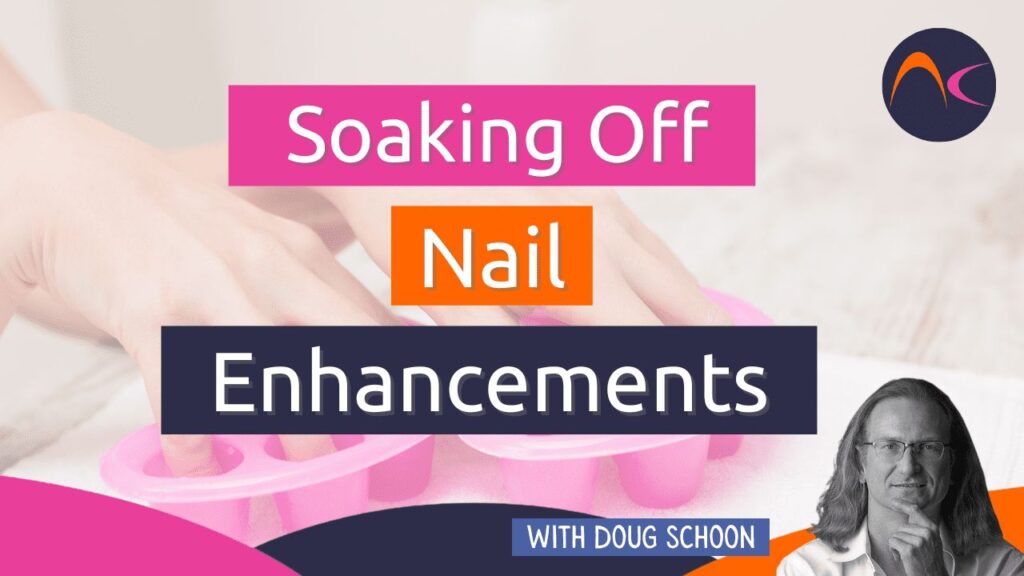A nail professional contacted me recently with a question regarding soaking off nail enhancements. Apparently, she has one client who believes that soaking off her enhancements with her foiled fingers in a plastic bag sitting in a bowl of warm water is less irritating for her skin than when the foil-covered enhancements are placed under a 60w incandescent bulb. The nail pro worries that having the nails in a moist environment, rather than dry, while soaking is a bad idea. The client claims her skin is itchy the next day when they place the foils under the warming glow of the bulb. The water method takes longer, leaks, and is incredibly inefficient. The nail pro suggested to her client to use no heat/ water/warming lamp, but she won’t listen. So what should you do in a similar situation?
Solventes e calor
In general, the addition of heat always makes a solvent more efficient, not less. Any nail solvent remover will work much faster when gently warmed. Of course, it is important to warm solvents safely, especially if they are highly flammable, as acetone obviously is. Never heat a solvent to any warmer than “Jacuzzi temperature”, 103oF ou 40oC. There is no need to use a “hot” solvent since warm solvents will work very efficiently and will be a lot safer to work with in the salon setting. By more efficient, I mean the nail coating will dissolve faster. Why? For the same reason that warm water will dissolve sugar much faster than cold water. Water is the solvent in this case, and warming it will make it an even better solvent.
Não é necessário se preocupar com a imersão dos aprimoramentos de unhas em um ambiente úmido, pois isso não deve ter efeitos negativos sobre a imersão. Além disso, talvez você não perceba, mas o método de remoção que o profissional de unhas está usando no momento também depende de calor adicional para acelerar o processo de remoção. A mão é bastante quente, cerca de 98oF (36oC). The heat of the hand warms the acetone inside the foil wraps and will speed up removal.
Inflamabilidade
Even though the water method might be messy, I think it is a very good idea if done properly. The warm water method will heat acetone evenly, safely, and very efficiently. This is why I recommend using this method over all other ways of warming solvents. The reason why it is much safer is because it avoids using an electrical heat source near the highly flammable acetone. You should never warm acetone in a microwave or on a hot plate. And definitely not with an open flame or any electrical devices such as a coffee cup warmer or blow dryers. Unless the electrical device is specifically designed to safely warm nail remover solvents, it should not be used for such purposes.
Colocar uma pequena garrafa plástica parcialmente cheia de acetona e com a tampa ligeiramente solta dentro de uma tigela de água morna é uma maneira muito segura de aquecer a acetona de forma suave e segura. Quanto mais quente a acetona estiver, mais rapidamente ela produzirá vapores e mais forte será o cheiro. Com mais vapores no ar, a acetona se tornará ainda mais inflamável. Portanto, seja especialmente cauteloso para evitar qualquer fonte de chama aberta ou faísca. Você não deve ter incensários, velas ou outros itens no salão que possam inflamar os vapores de acetona. Também não se deve permitir o fumo na área. Certifique-se de armazenar a acetona em um local fresco e longe do calor da luz solar direta.
Coceira na pele
I’d also like to comment on the client’s itchy skin. In this case, the itchy skin is probably a form of skin irritation or worse. Nail technicians should always be concerned when a client tells them that something is causing itching or they see other signs of skin irritation such as redness, rash, or unusual and long-lasting warmth in those same areas. In fact, I recommend that you stop the procedure that causes the itching and use an alternative method until you determine the cause.
Skin allergy can begin with the same symptoms as simple skin irritation, so these can be difficult to tell apart. I’d recommend erring on the side of caution in this case. Assume the client may be in the process of developing an allergic reaction. When a client complains of skin irritation, the last thing you want to do is dismiss their concerns and proceed as usual. This is a warning sign that you should NOT ignore. When clients tell you that their skin feels unusually warm or itchy in specific areas that could likely be a signal of an impending allergic reaction in that same area.
Allergic reactions to nail products are almost always caused by prolonged and/or repeated skin contact with nail coating products. Those products are supposed to be kept off the skin. These problems don’t develop overnight and there are usually many warning signs, as previously described, so don’t ignore them.
Any/all artificial nail coatings can cause adverse skin reactions, including UV gel manicures. However, none of them would cause these problems if prolonged and/or repeated contact were avoided. Occasional accidental contact with the skin isn’t what causes these issues. Irritation and allergy are most often caused by repeated contact. If we would always avoid repeated contact, adverse skin reactions to nail products would be very rare.
Produtos não garantidos
Additionally, if a client’s skin is itching while soaking their nails, this can be a sign that the nail coating is not properly cured!
Properly cured nail coatings contain very few unreacted ingredients left over to cause adverse skin reactions. However, when they are under-cured, nail coatings will contain excessive amounts of unreacted ingredients. These unreacted ingredients can escape from the nail coating into the acetone or other product removers. This will cause skin over-exposure to these unreacted ingredients. Some types of unreacted ingredients may cause skin allergies or irritation.
How can under-curing occur? Using the incorrect UV nail lamp or not changing the UV bulbs on a regular basis are common reasons. With L&P, using mismatched products or use too much monomer liquid, can lead to under-cured enhancements. Avoid both situations and make sure you properly cure your nail coatings.


